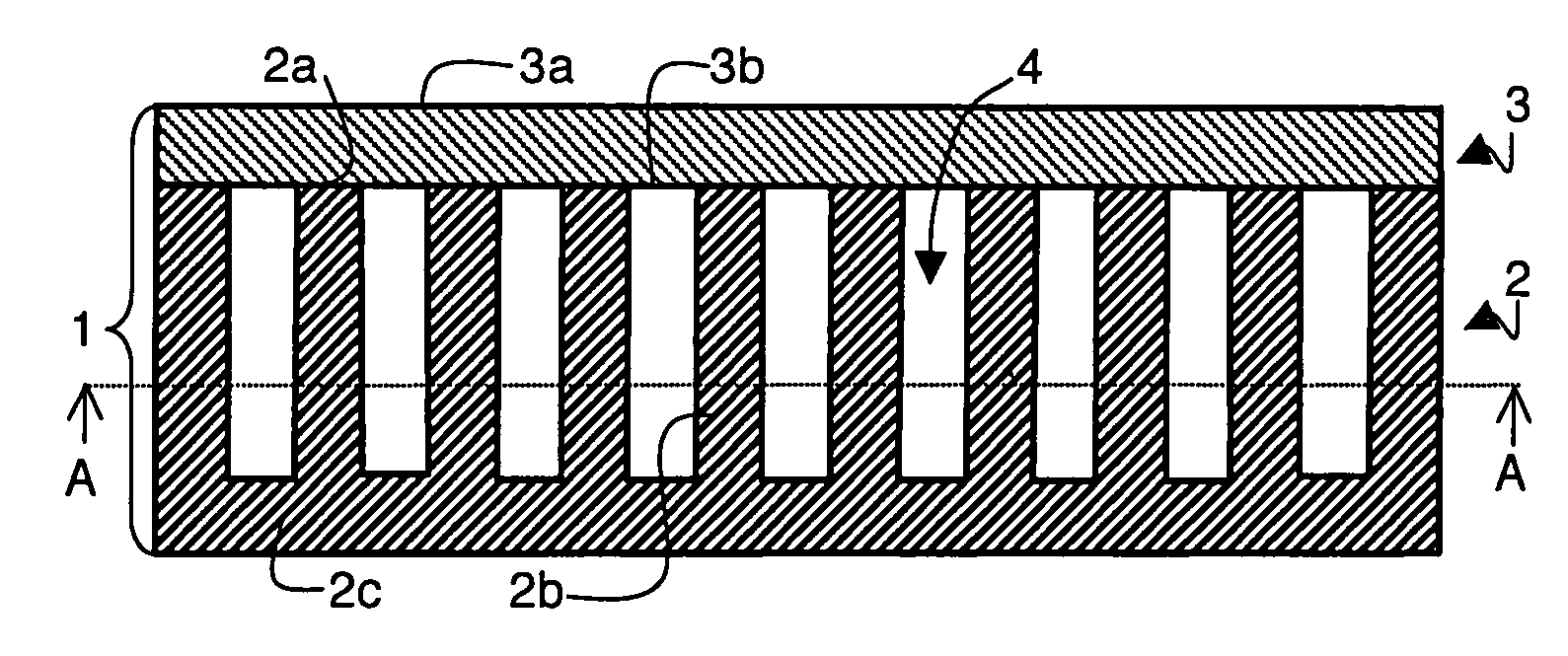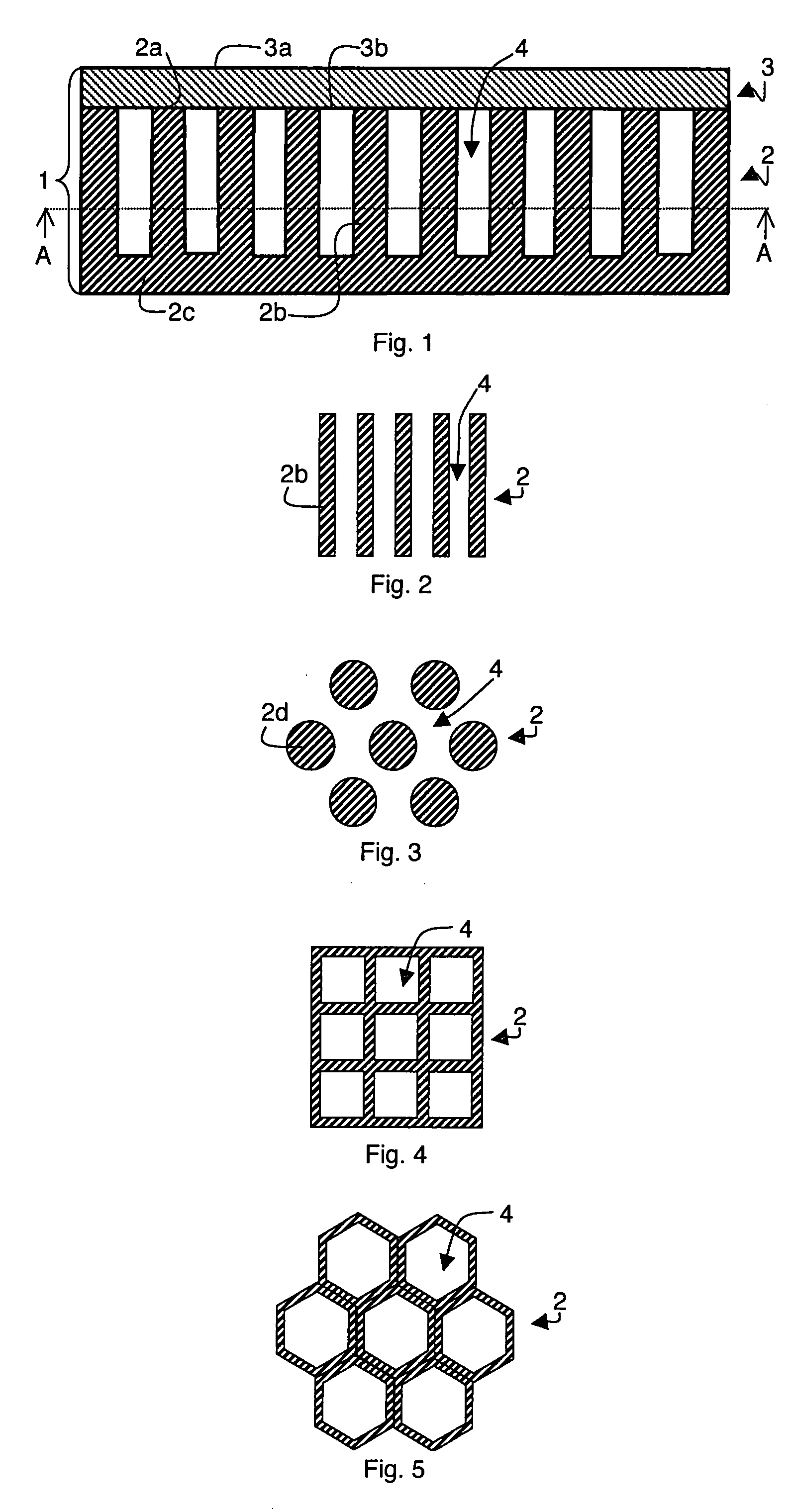Lithium storage battery comprising a current-electrode collector assembly with expansion cavities and method for producing same
- Summary
- Abstract
- Description
- Claims
- Application Information
AI Technical Summary
Benefits of technology
Problems solved by technology
Method used
Image
Examples
first embodiment
[0035] the expansion cavities are formed by the recessed zones of the current collector and the continuous thin layer of the electrode is arranged on said current collector to cover said recessed zones.
[0036]Thus, as represented in FIGS. 1 and 2, an assembly 1 for a lithium storage battery comprises a stack of two thin layers respectively forming current collector 2 and electrode 3. The electrode, formed by continuous thin layer 3, comprises flat and parallel opposite first and second surfaces 3a and 3b. First surface 3a is free and is designed to be in contact with the electrolytic membrane. Second surface 3b is in contact with surface 2a of current collector 2, in which the openings or recessed zones 4 constituting the expansion cavities are made. Second surface 3b of electrode 3 is thus arranged on the free ends of the side walls delineating the recessed zones in current collector 2.
[0037]Expansion cavities 4 are thus formed in current collector 2 and they extend up to surface 2a...
second embodiment
[0052]Thus, represented in FIG. 11, assembly 1 can be formed by a current collector 2 comprising a surface 2a provided with a plurality of recessed zones and an electrode formed by a continuous thin layer 9 obtained by conformal deposition on said surface 2a of collector 2. The thin layer 9 is thus deposited on the whole surface 2a of the collector. It thereby covers the whole of the walls of the current collector delineating the recessed zones and the free ends of side walls 2b. Expansion cavities 10 are thus formed in the recessed zones of the current collector by the part of continuous thin layer 9 covering the walls of said zones. In this case, expansion cavities 10 are open, and do not comprise any upper walls. More particularly, the thickness of continuous thin layer 9 is selected such as to allow a free space between the two parts of thin layer 9 arranged facing a recessed zone, said space forming an expansion cavity.
[0053]In FIG. 11, the structure of current collector 2 is ...
PUM
 Login to View More
Login to View More Abstract
Description
Claims
Application Information
 Login to View More
Login to View More - R&D
- Intellectual Property
- Life Sciences
- Materials
- Tech Scout
- Unparalleled Data Quality
- Higher Quality Content
- 60% Fewer Hallucinations
Browse by: Latest US Patents, China's latest patents, Technical Efficacy Thesaurus, Application Domain, Technology Topic, Popular Technical Reports.
© 2025 PatSnap. All rights reserved.Legal|Privacy policy|Modern Slavery Act Transparency Statement|Sitemap|About US| Contact US: help@patsnap.com



